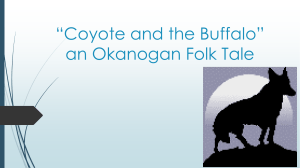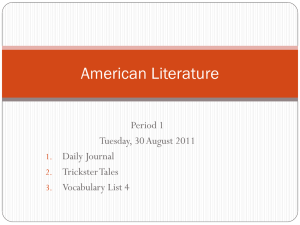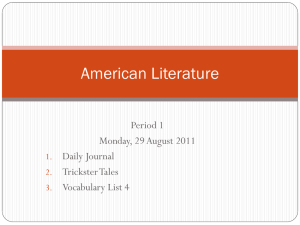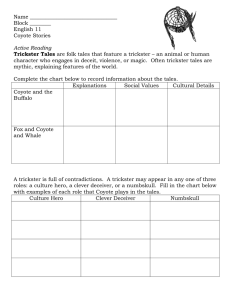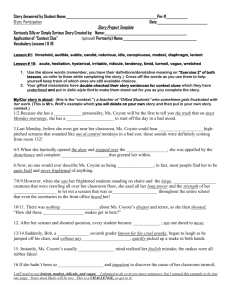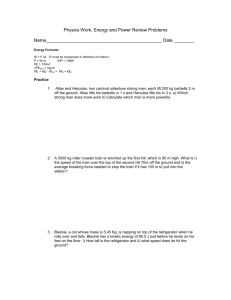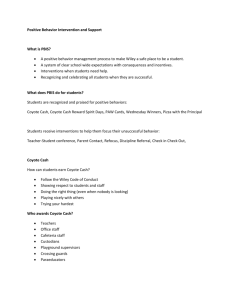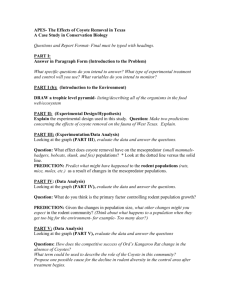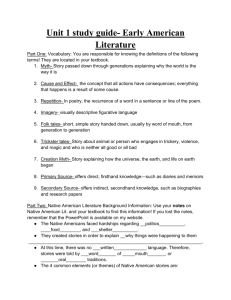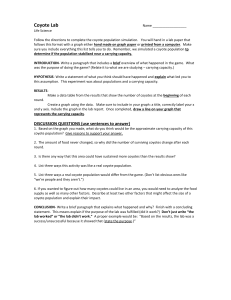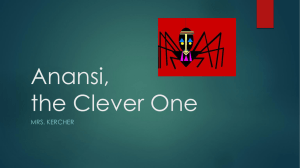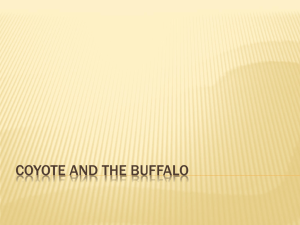Sample Paragraph Trickster Tale
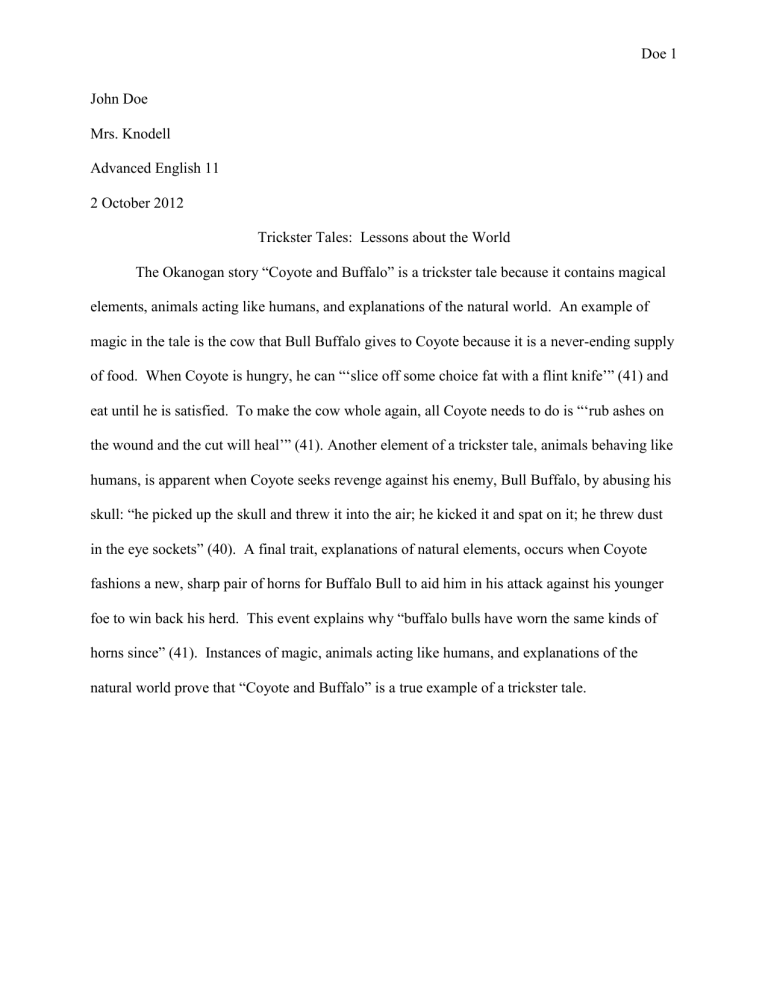
Doe 1
John Doe
Mrs. Knodell
Advanced English 11
2 October 2012
Trickster Tales: Lessons about the World
The Okanogan story “Coyote and Buffalo” is a trickster tale because it contains magical elements, animals acting like humans, and explanations of the natural world. An example of magic in the tale is the cow that Bull Buffalo gives to Coyote because it is a never-ending supply of food. When Coyote is hungry, he can “‘slice off some choice fat with a flint knife’” (41) and eat until he is satisfied. To make the cow whole again, all Coyote needs to do is “‘rub ashes on the wound and the cut will heal’” (41). Another element of a trickster tale, animals behaving like humans, is apparent when Coyote seeks revenge against his enemy, Bull Buffalo, by abusing his skull: “he picked up the skull and threw it into the air; he kicked it and spat on it; he threw dust in the eye sockets” (40). A final trait, explanations of natural elements, occurs when Coyote fashions a new, sharp pair of horns for Buffalo Bull to aid him in his attack against his younger foe to win back his herd. This event explains why “buffalo bulls have worn the same kinds of horns since” (41). Instances of magic, animals acting like humans, and explanations of the natural world prove that “Coyote and Buffalo” is a true example of a trickster tale.
